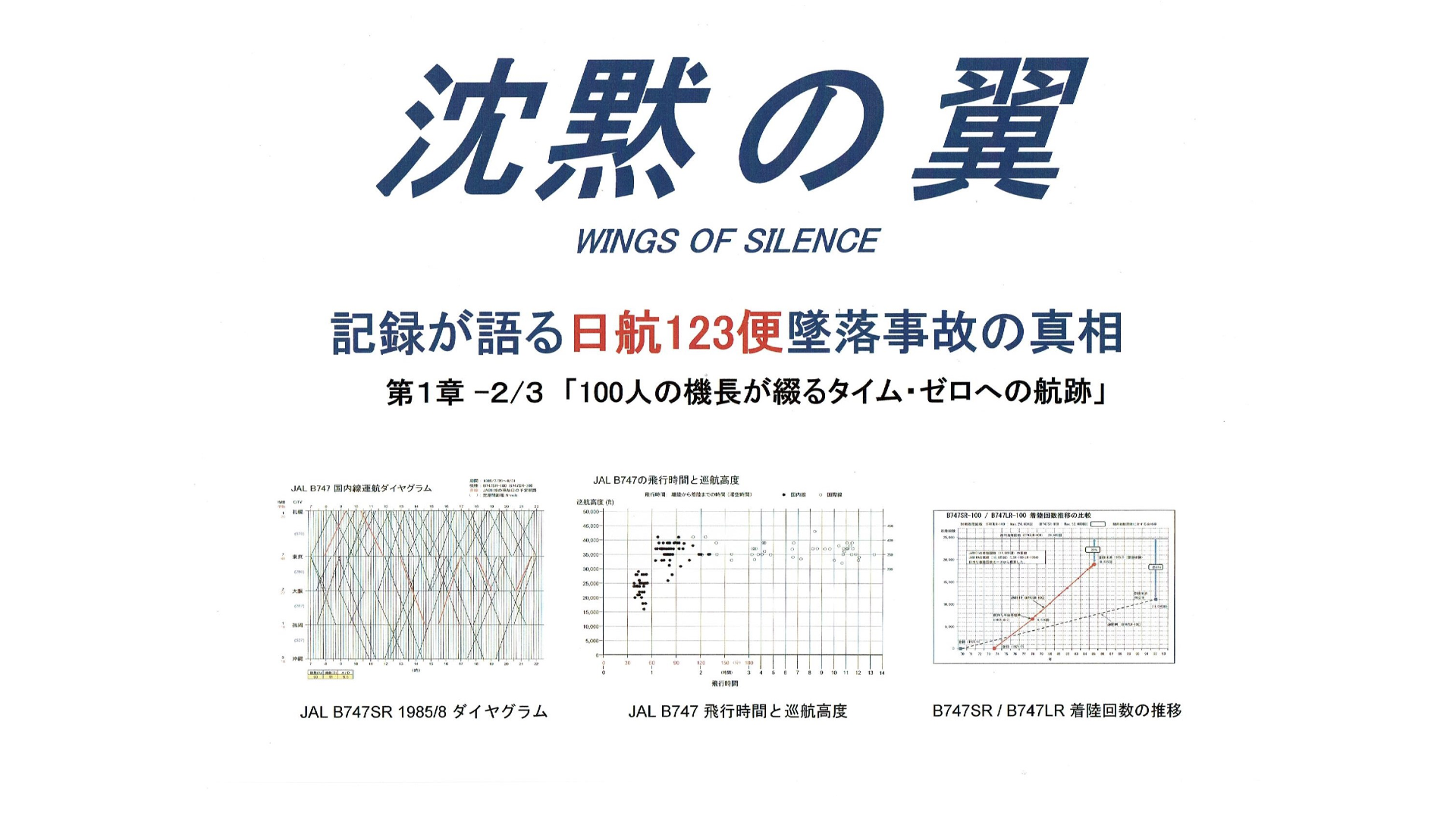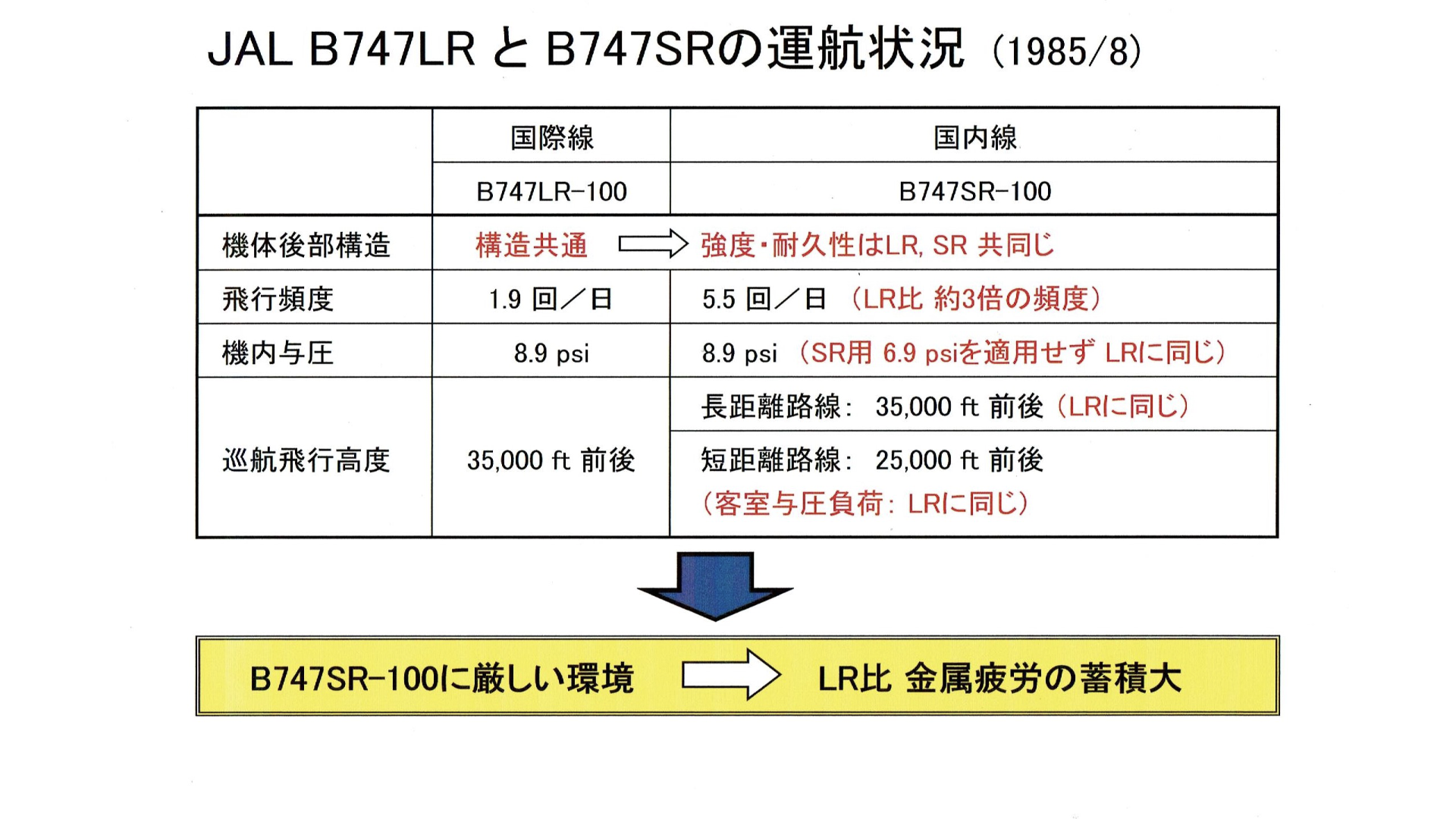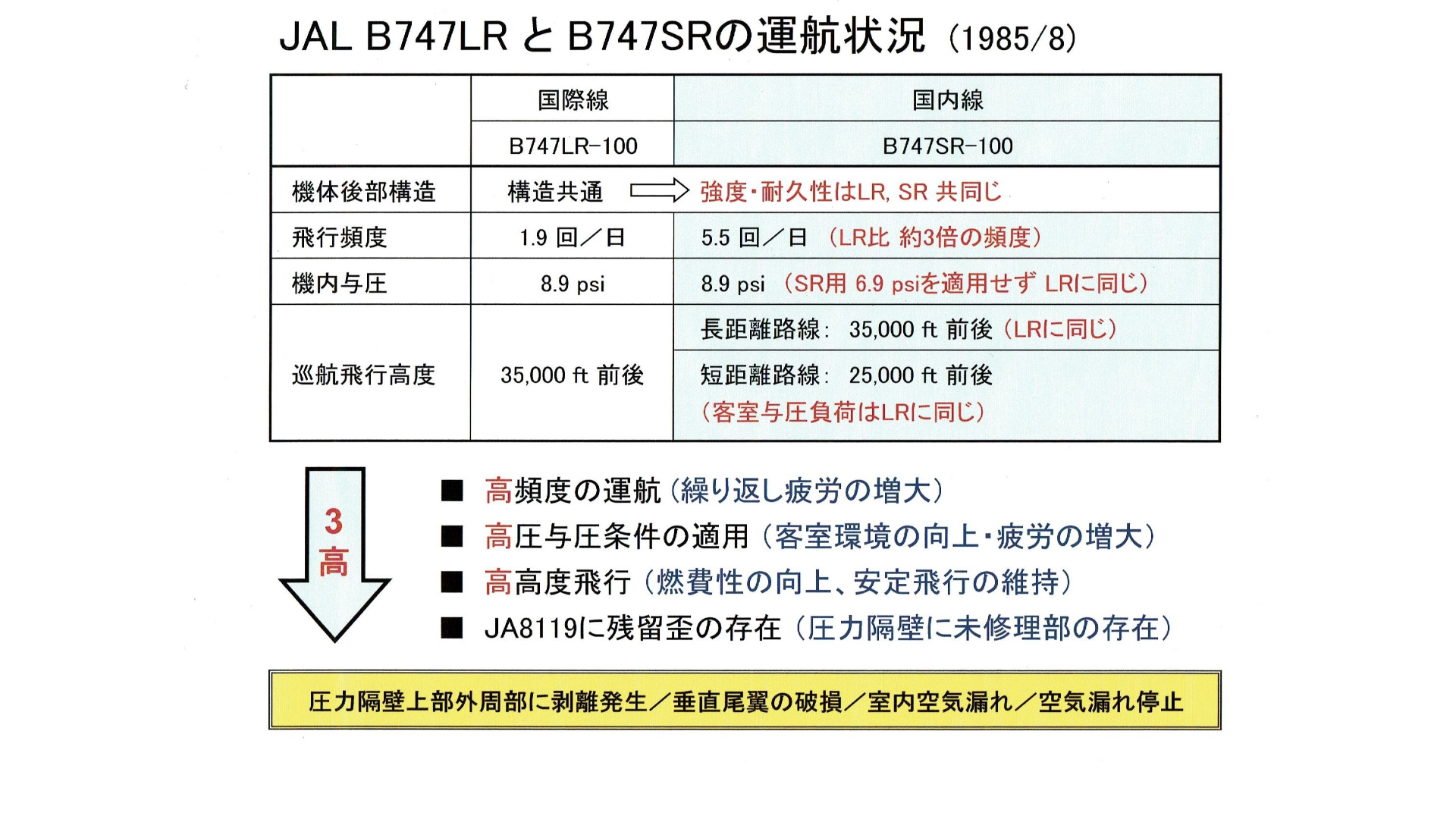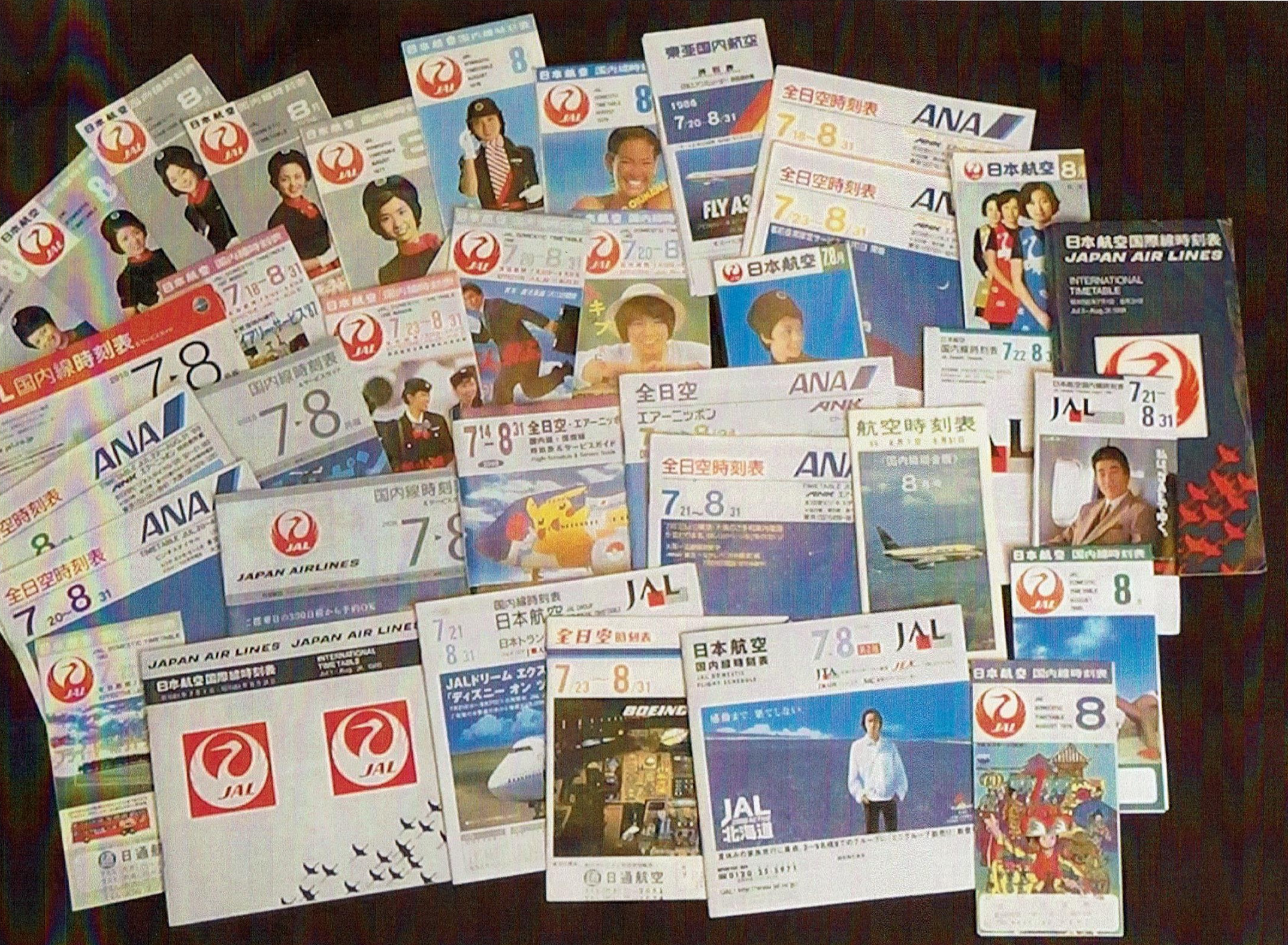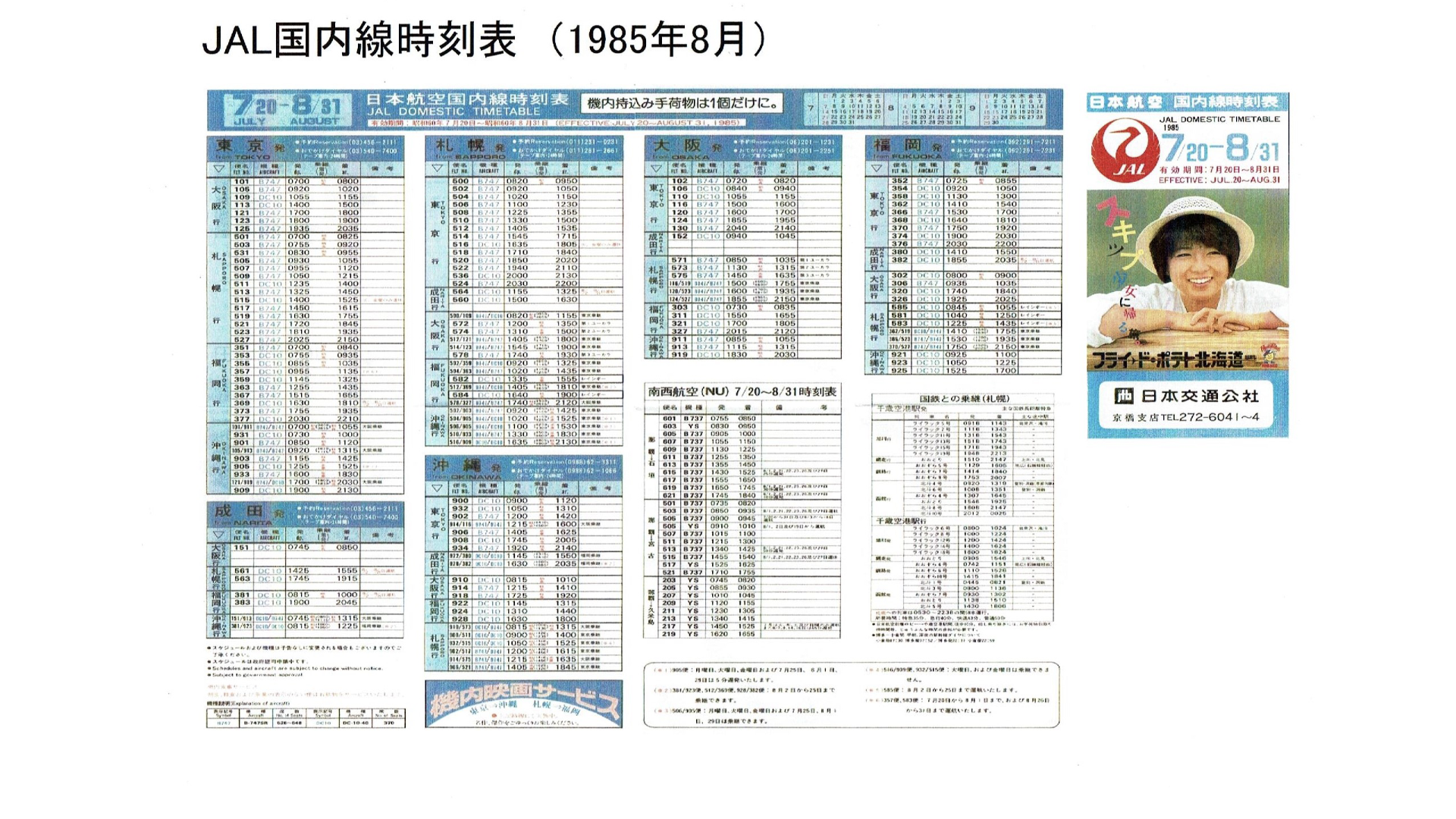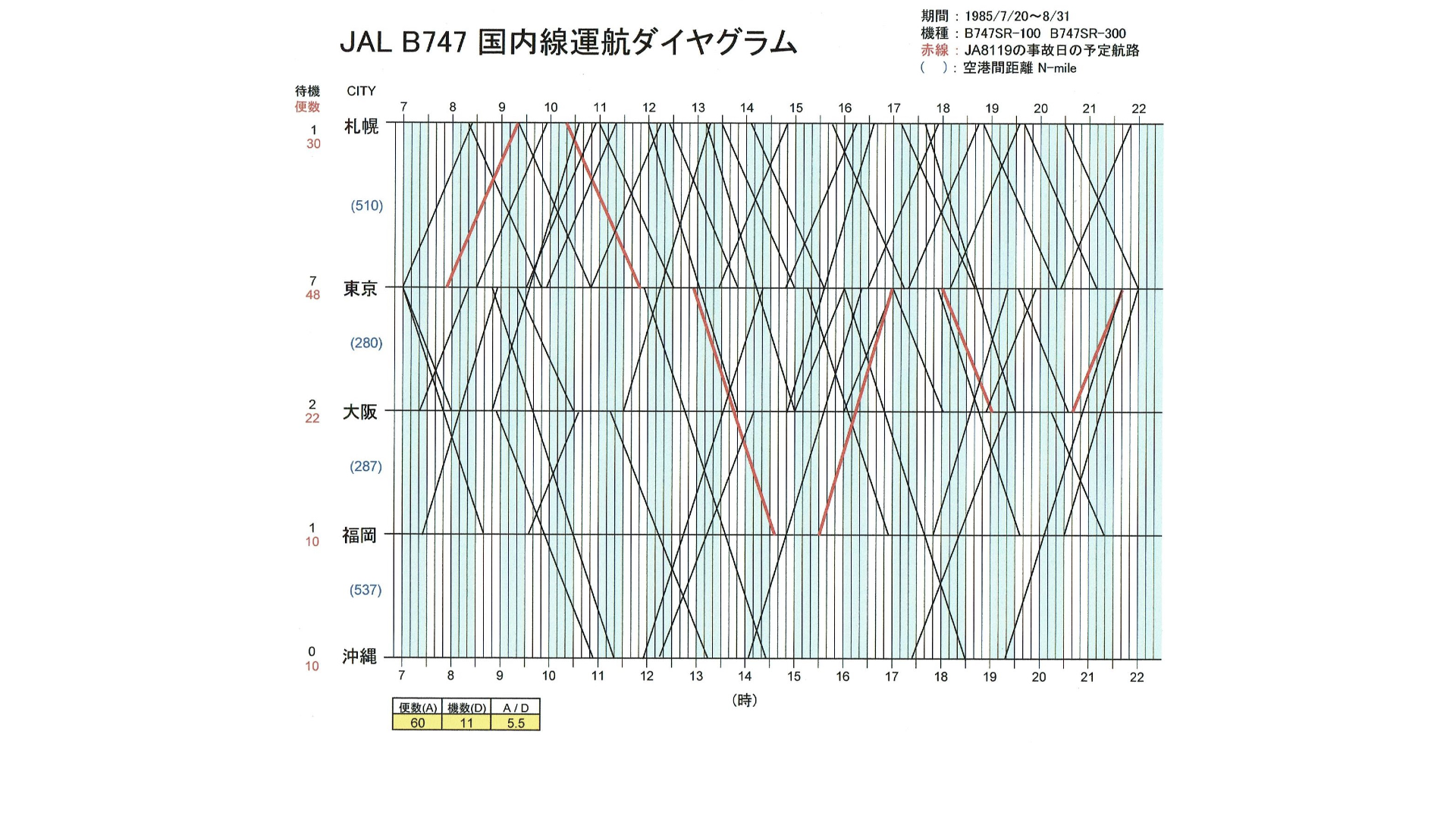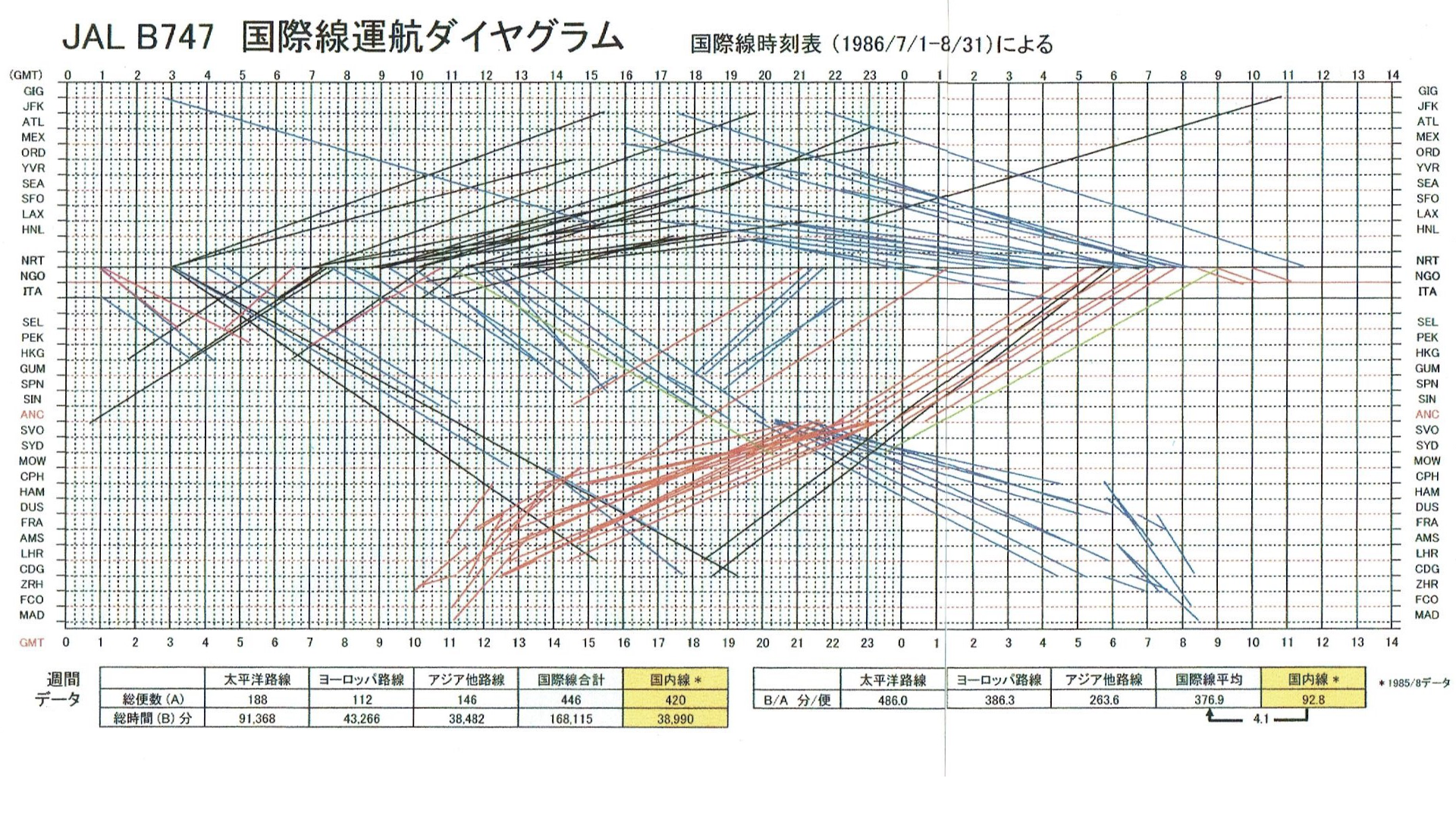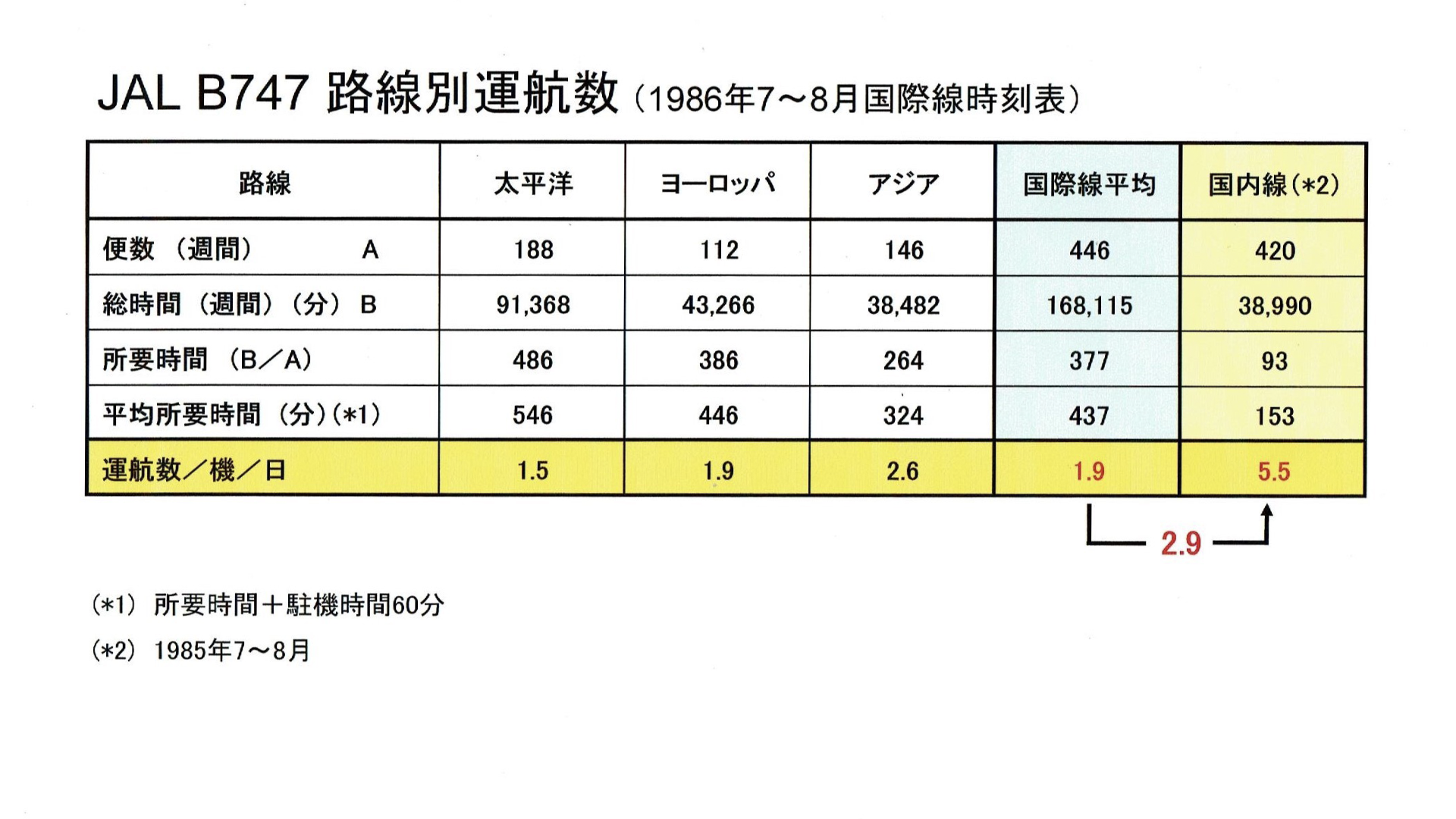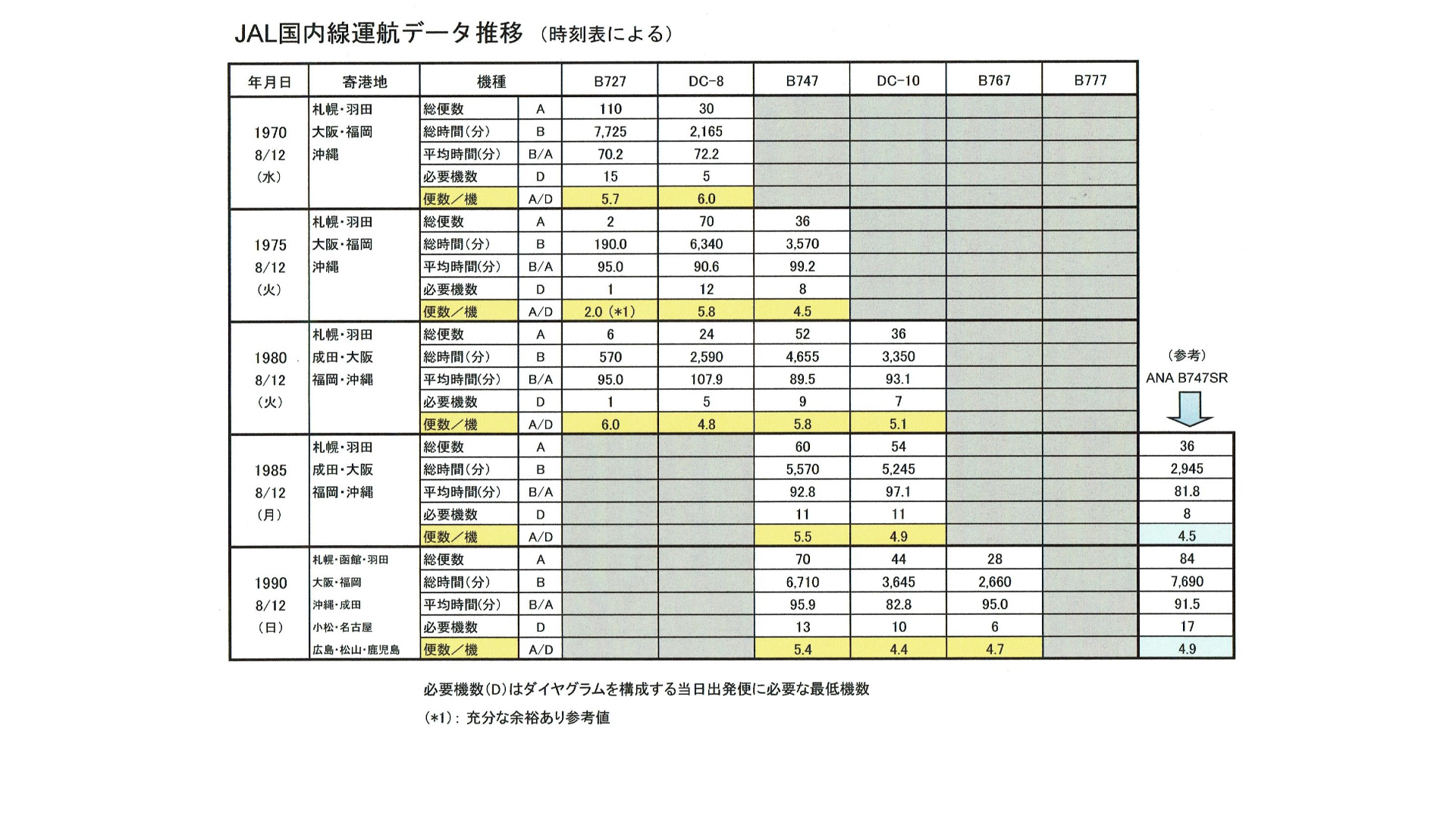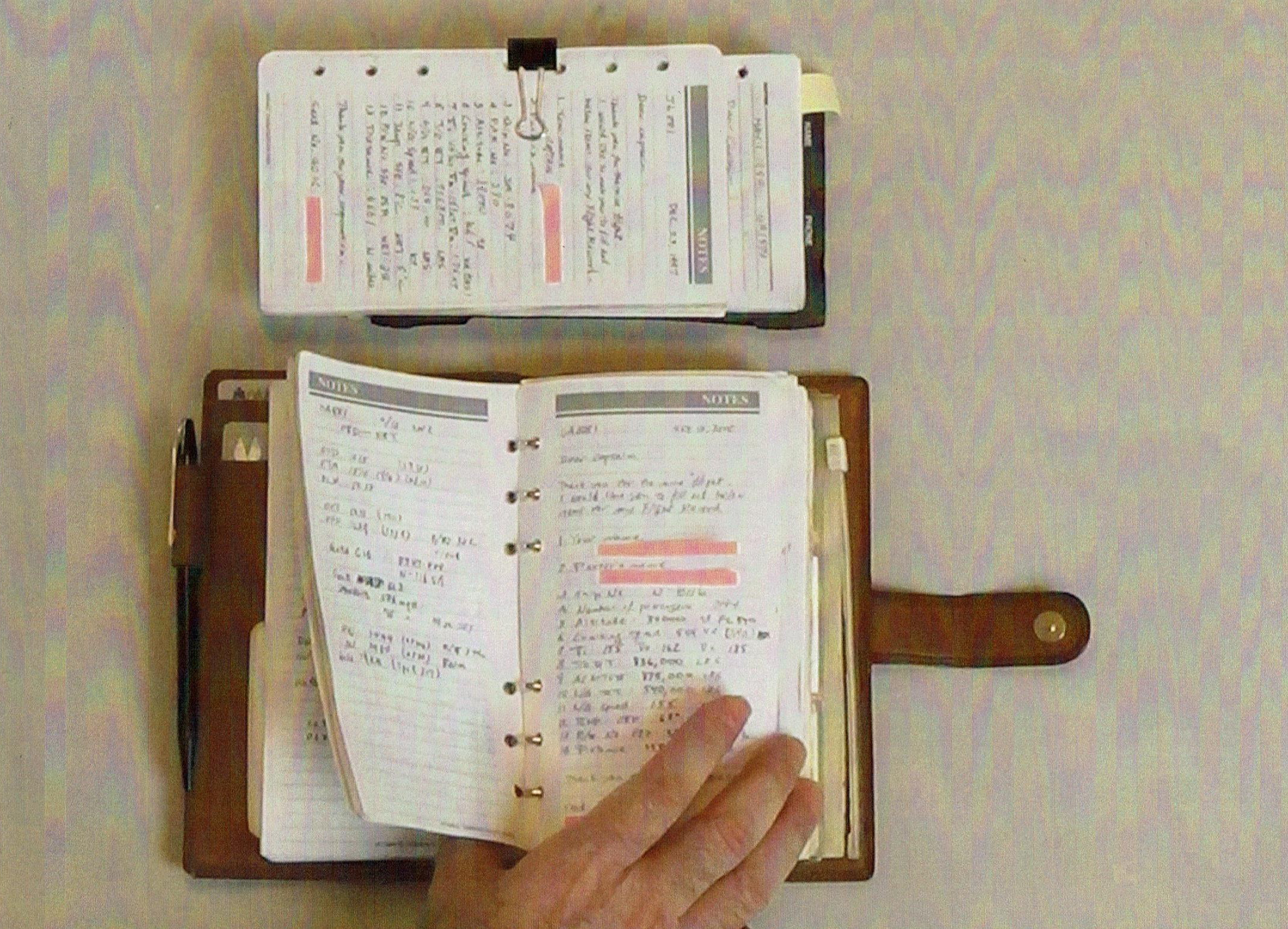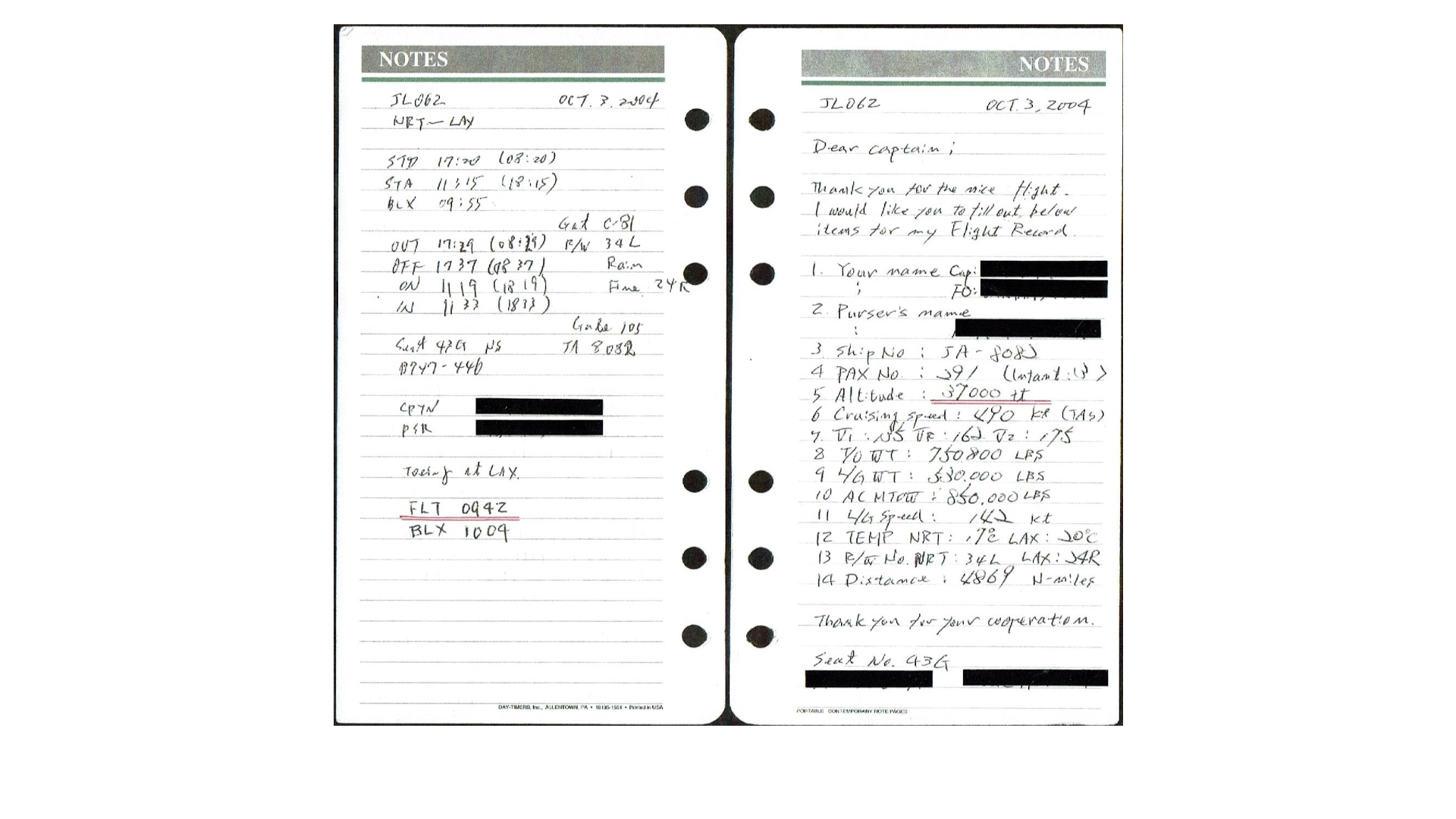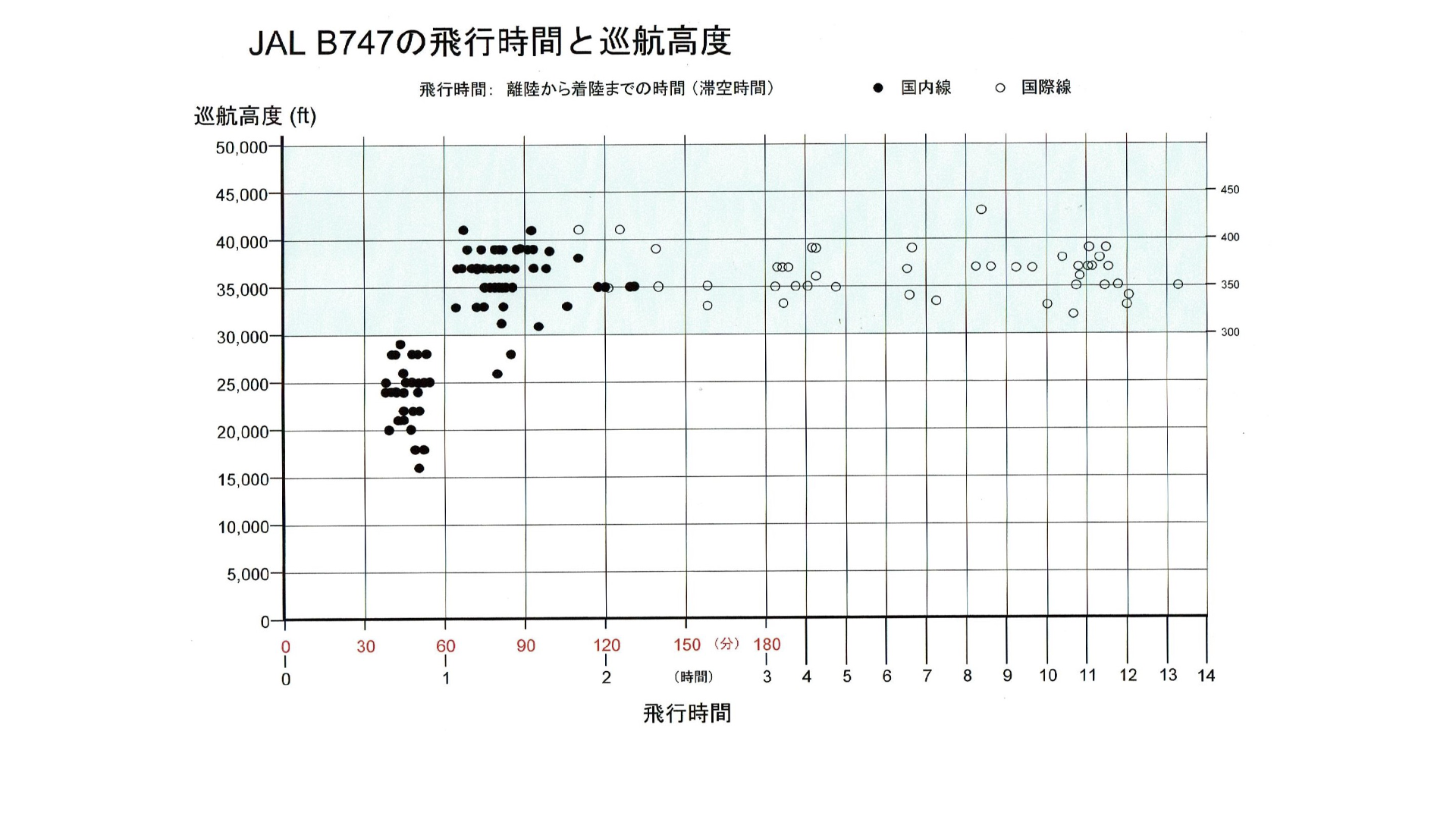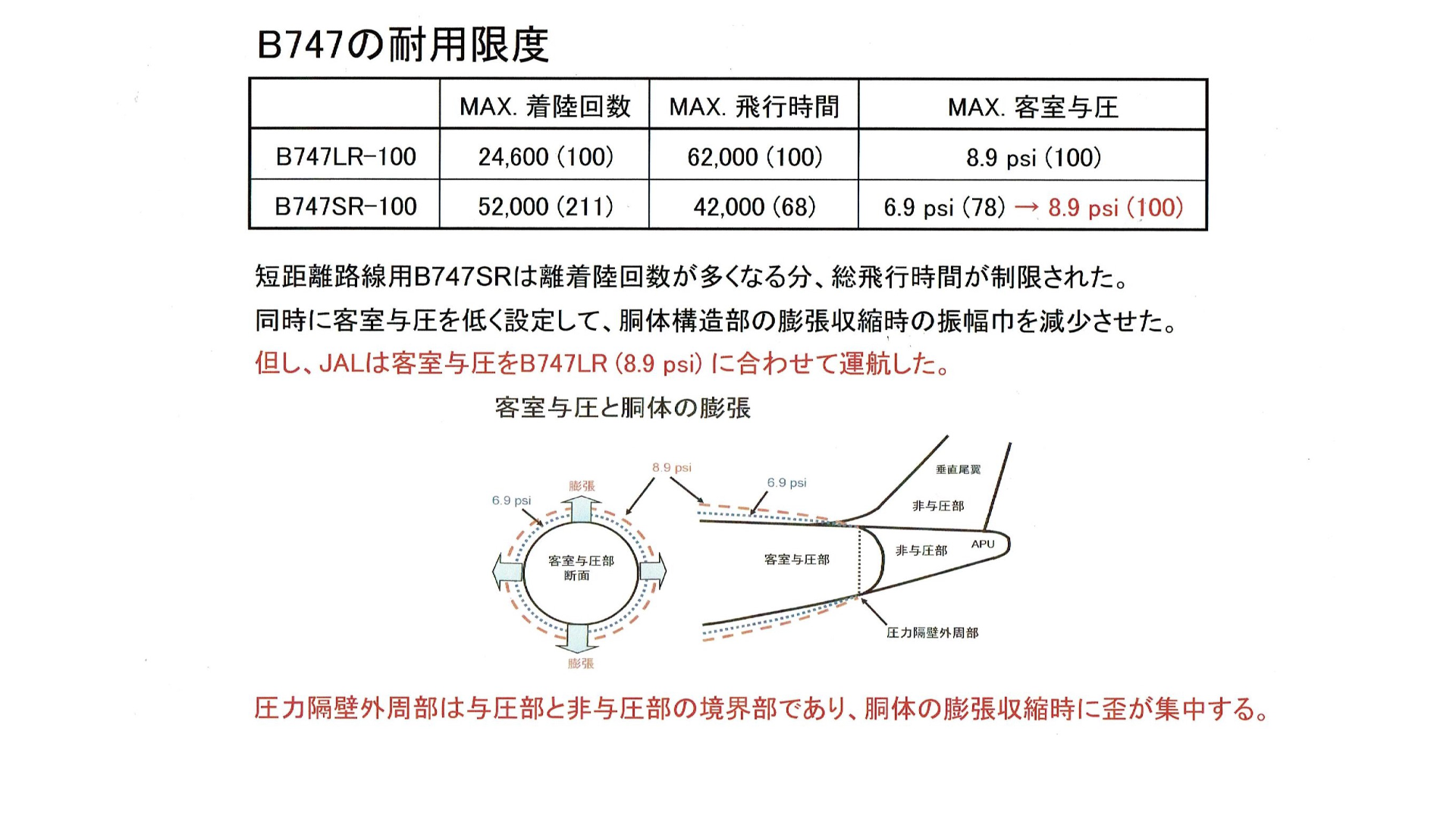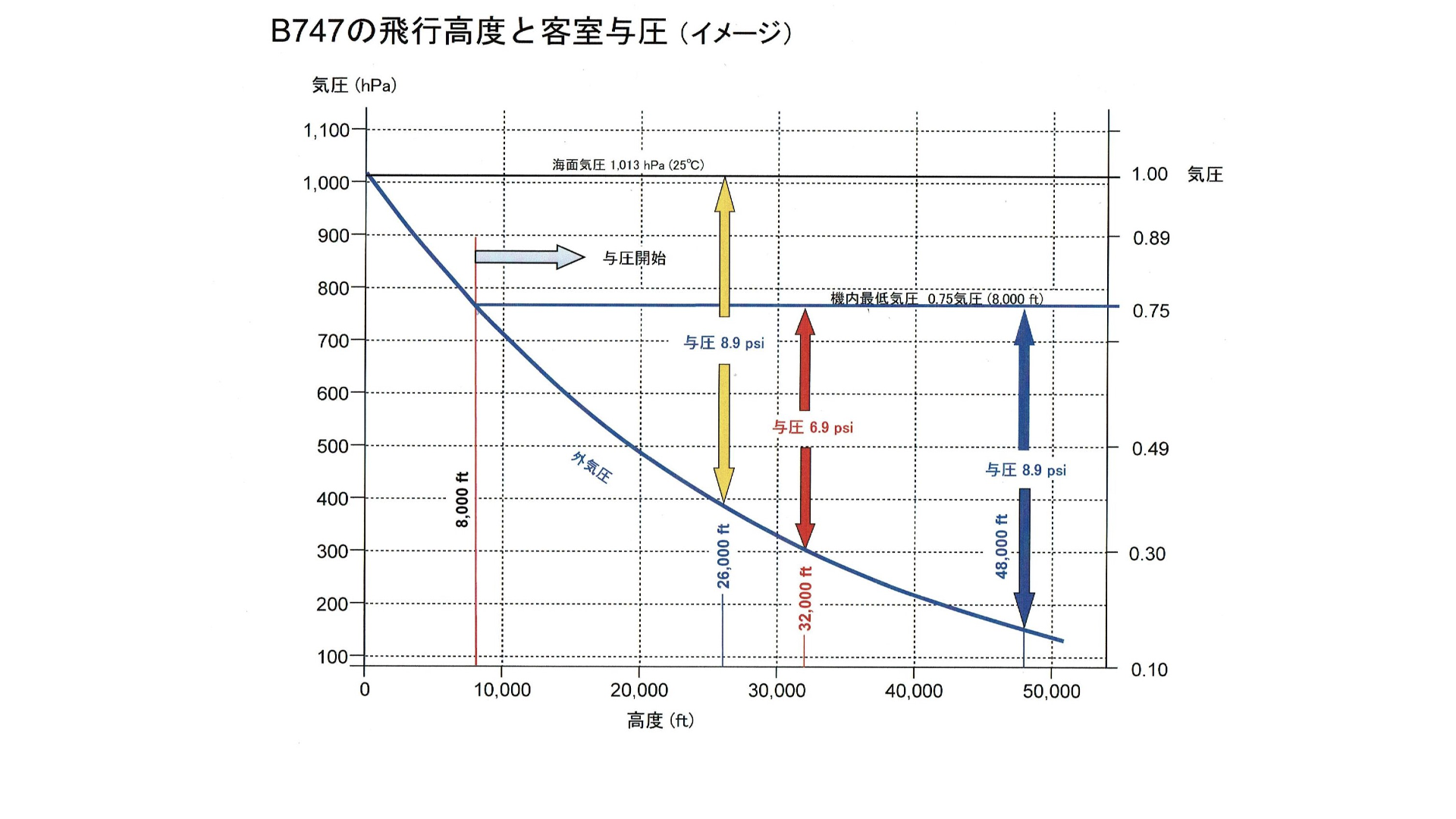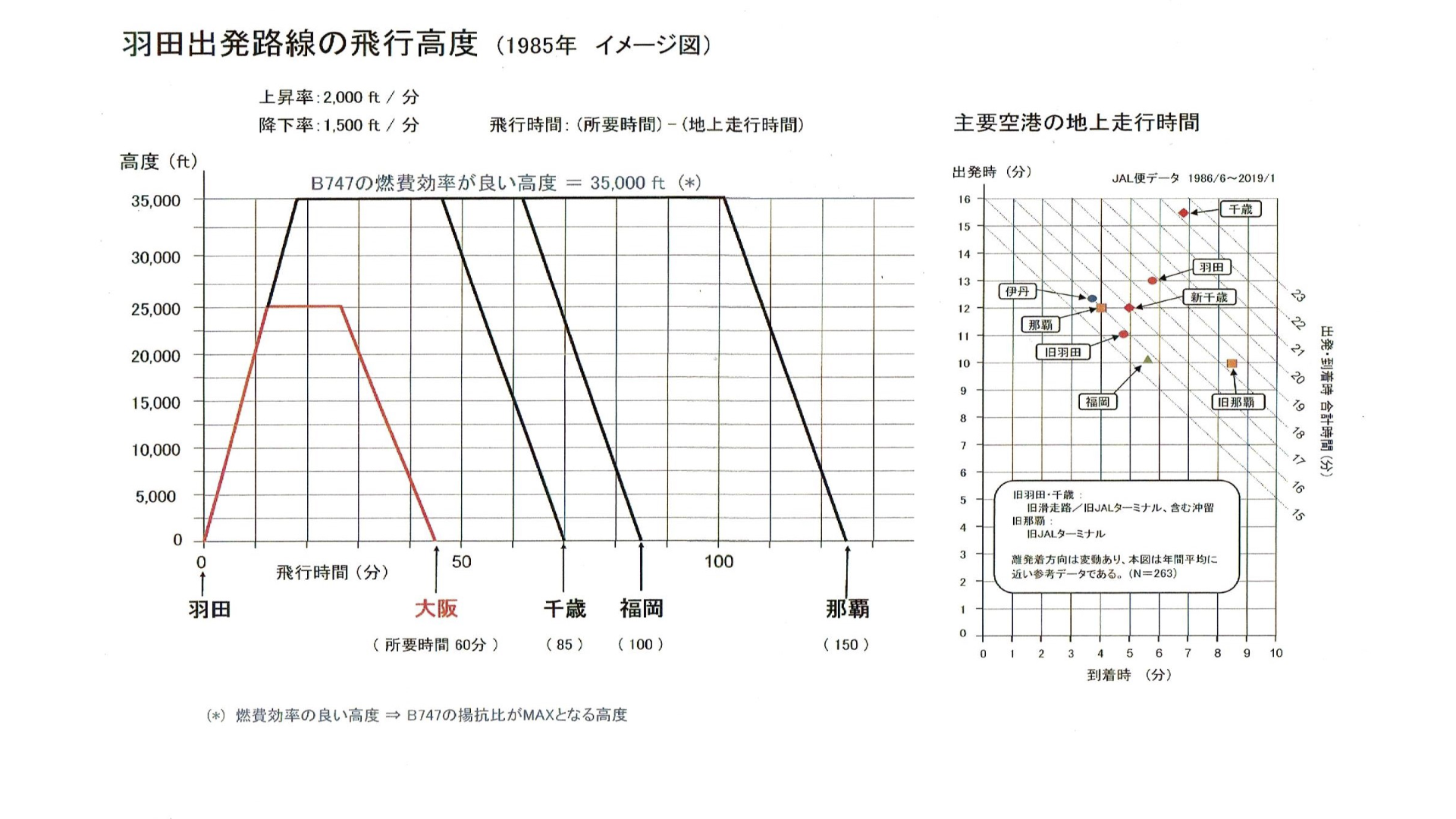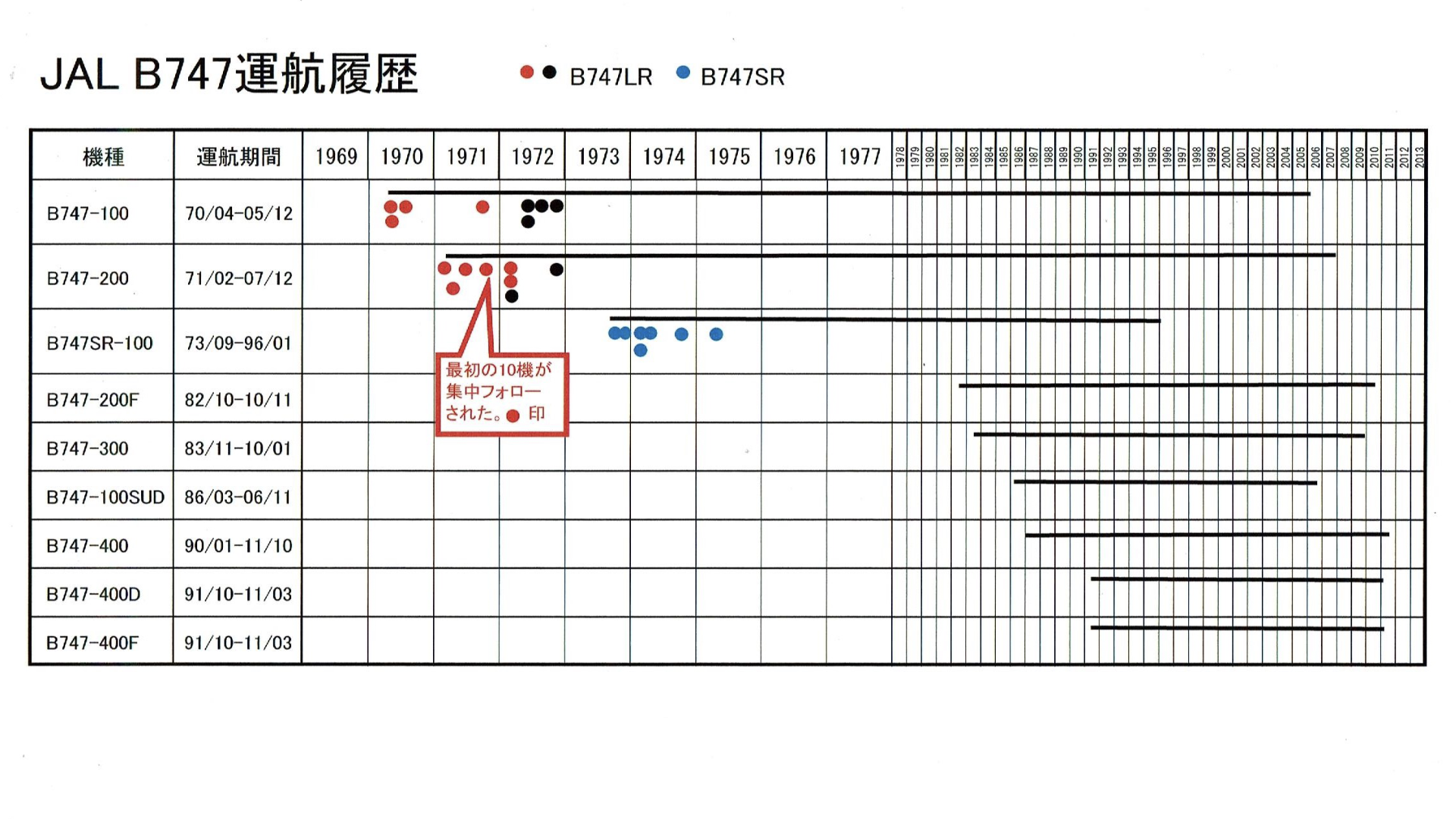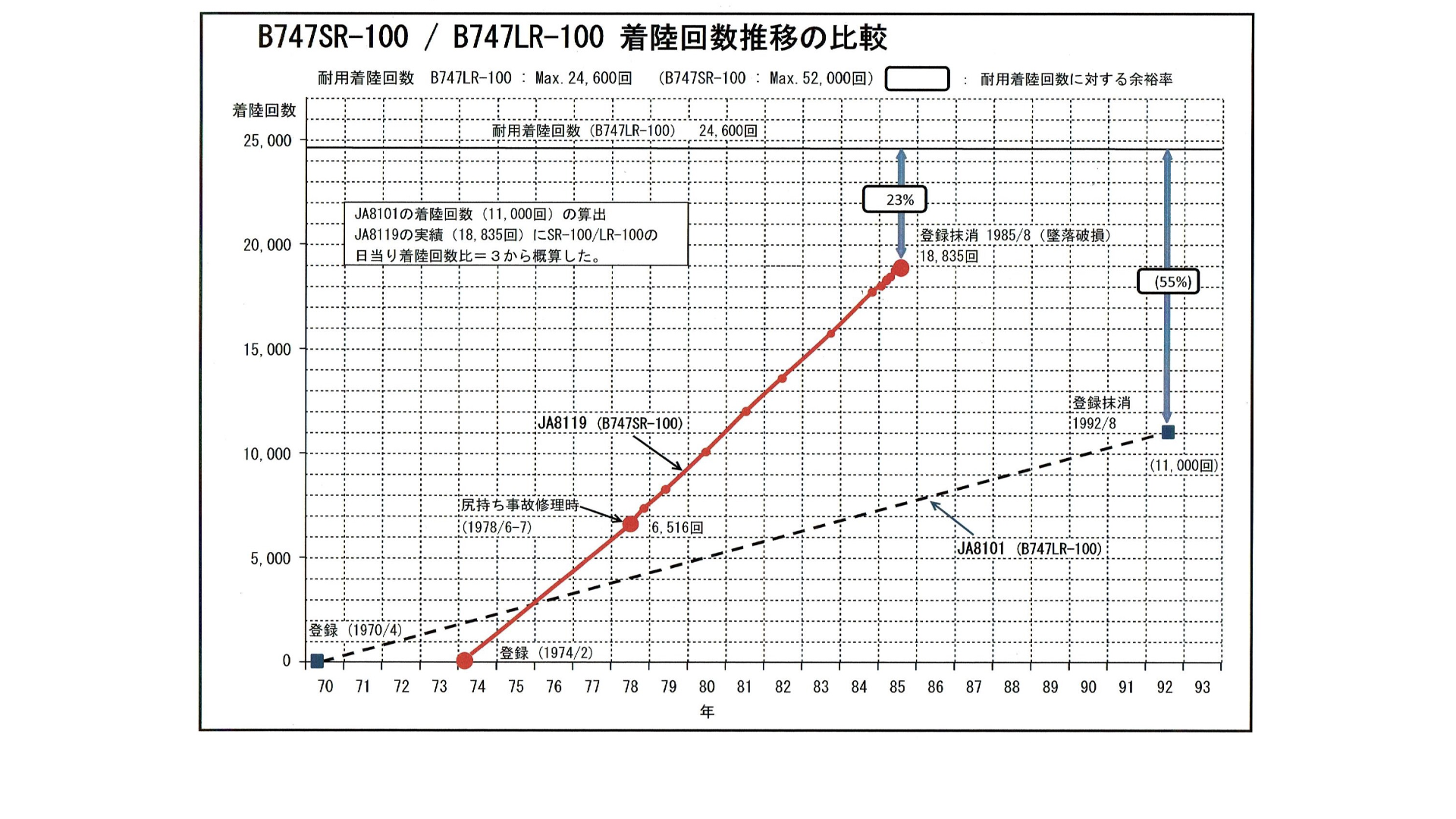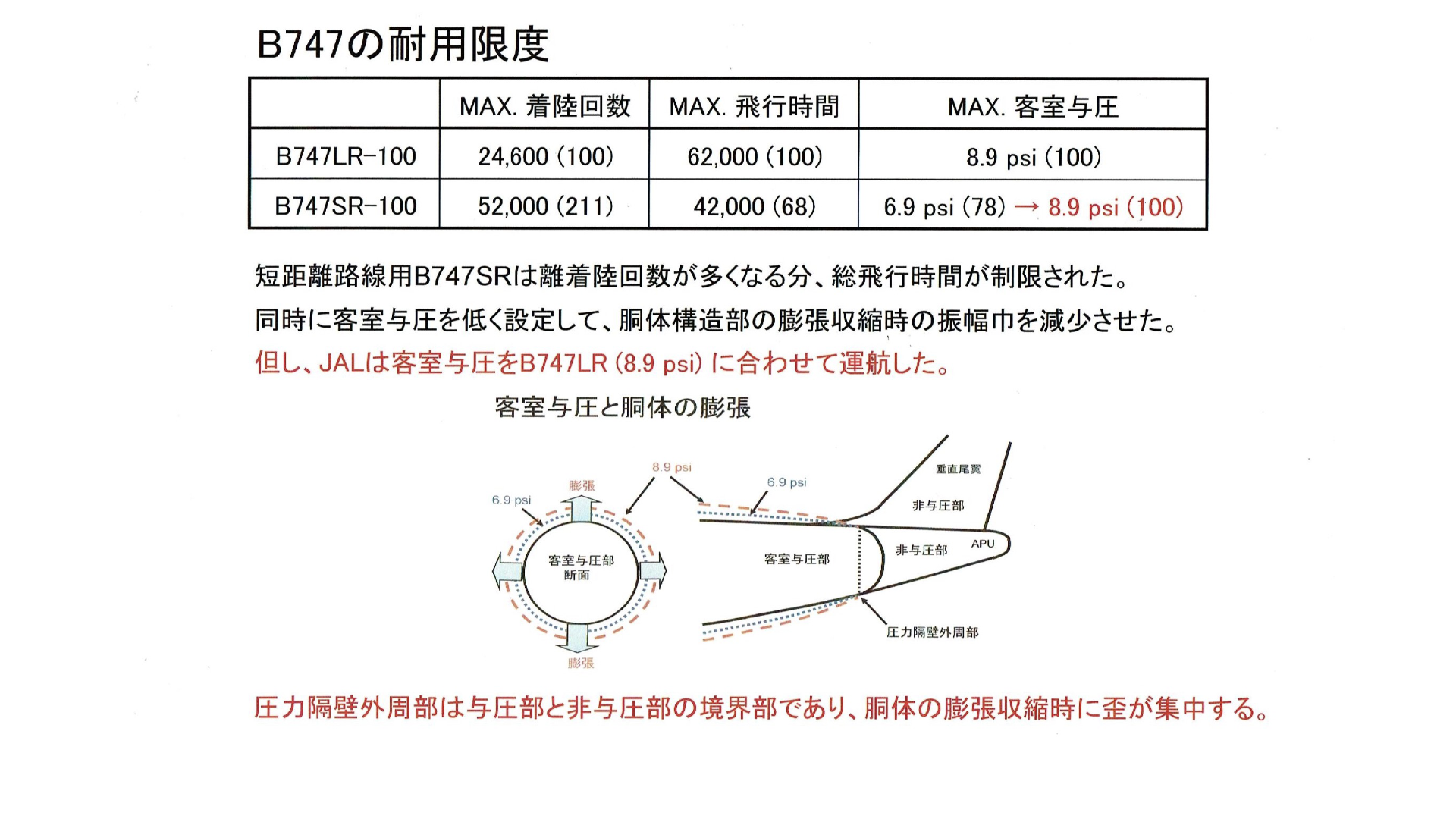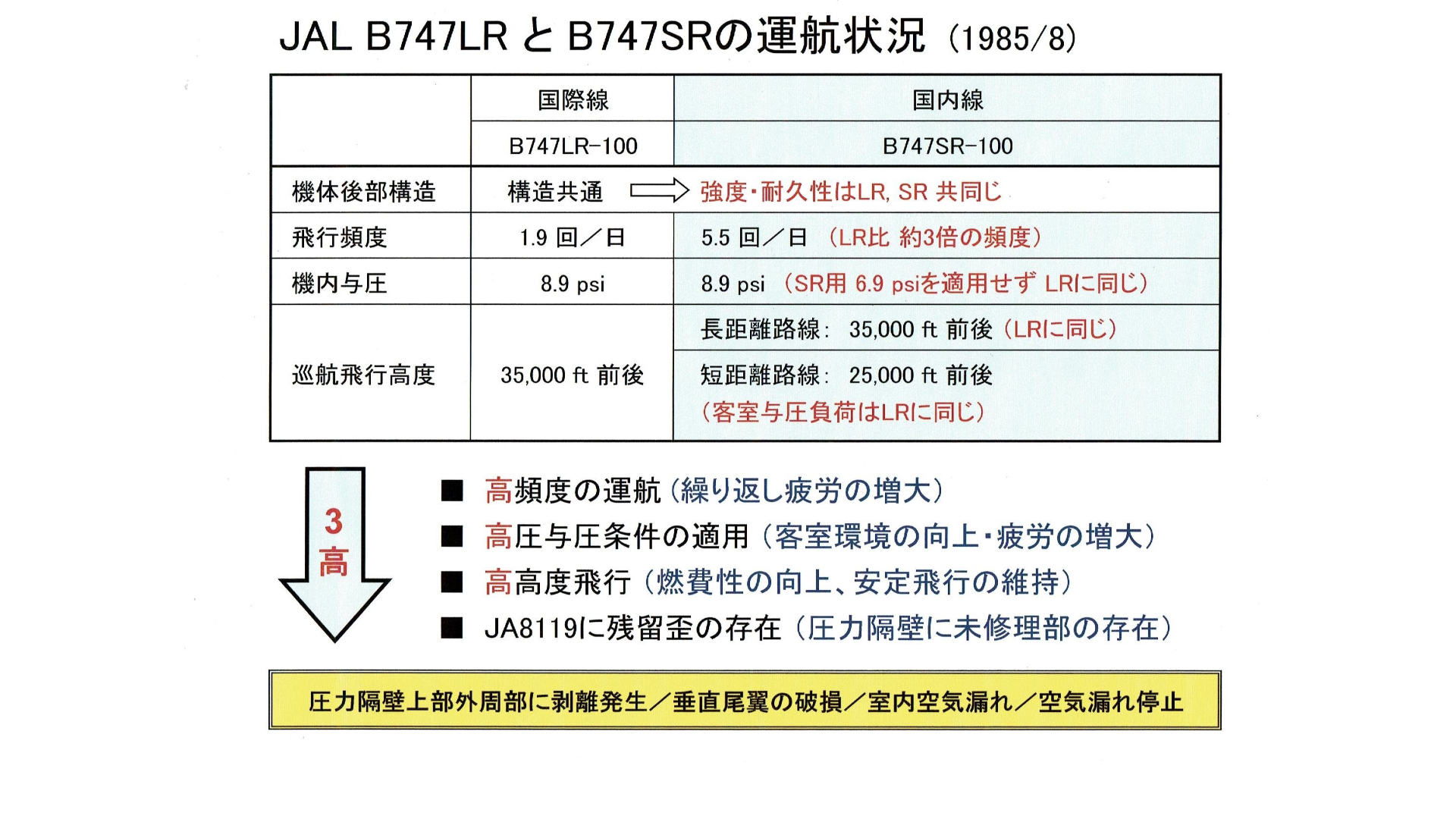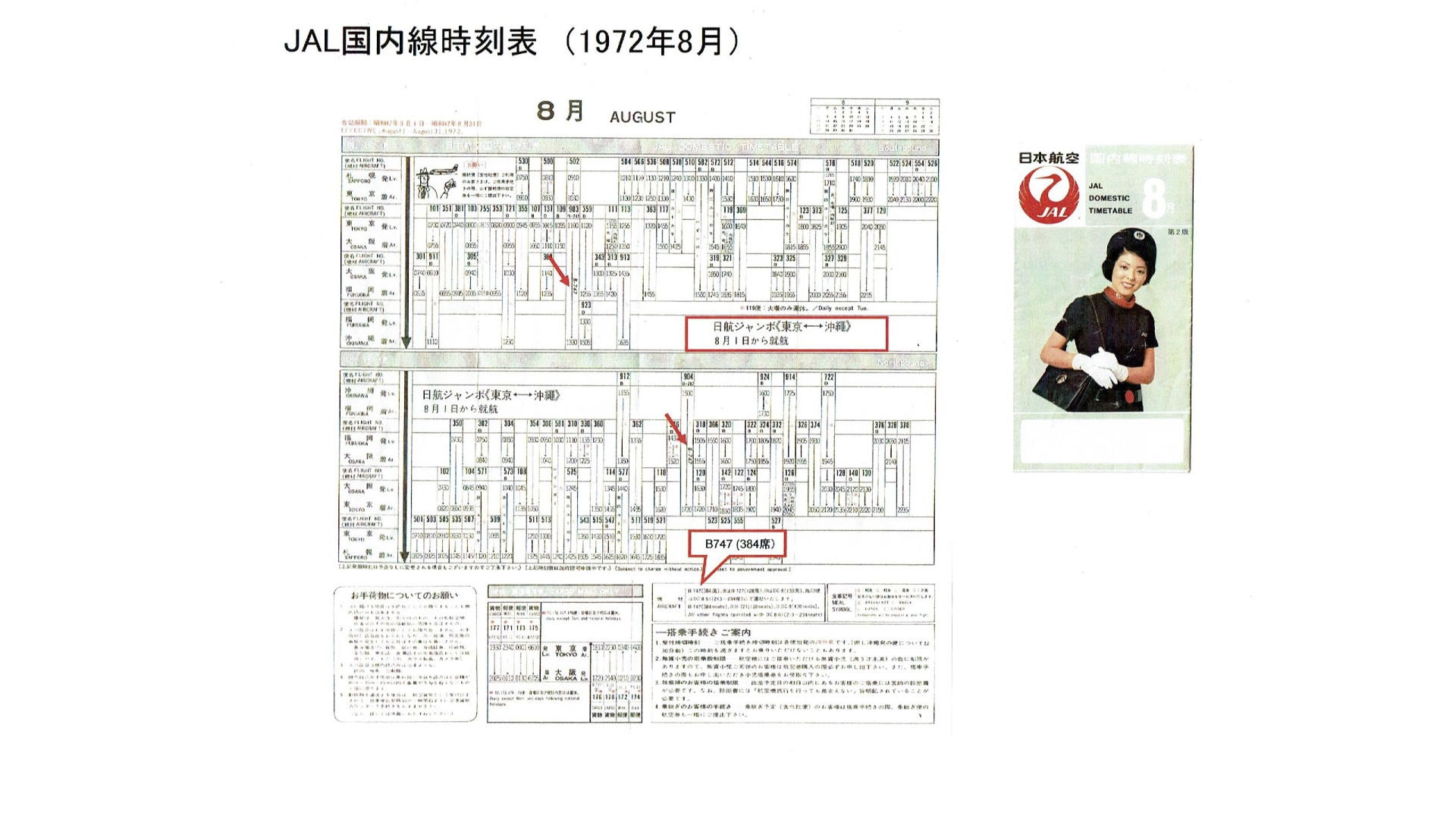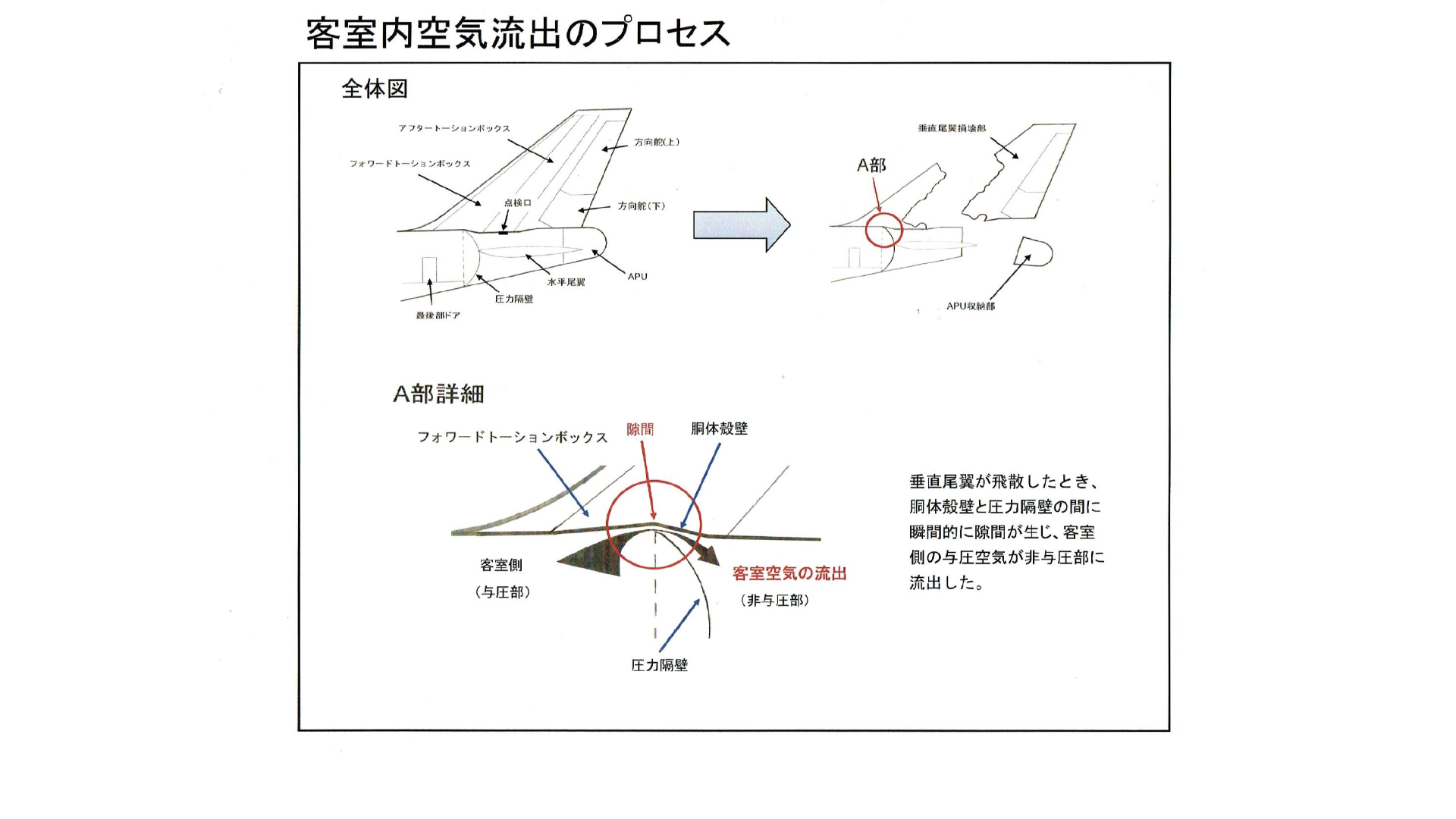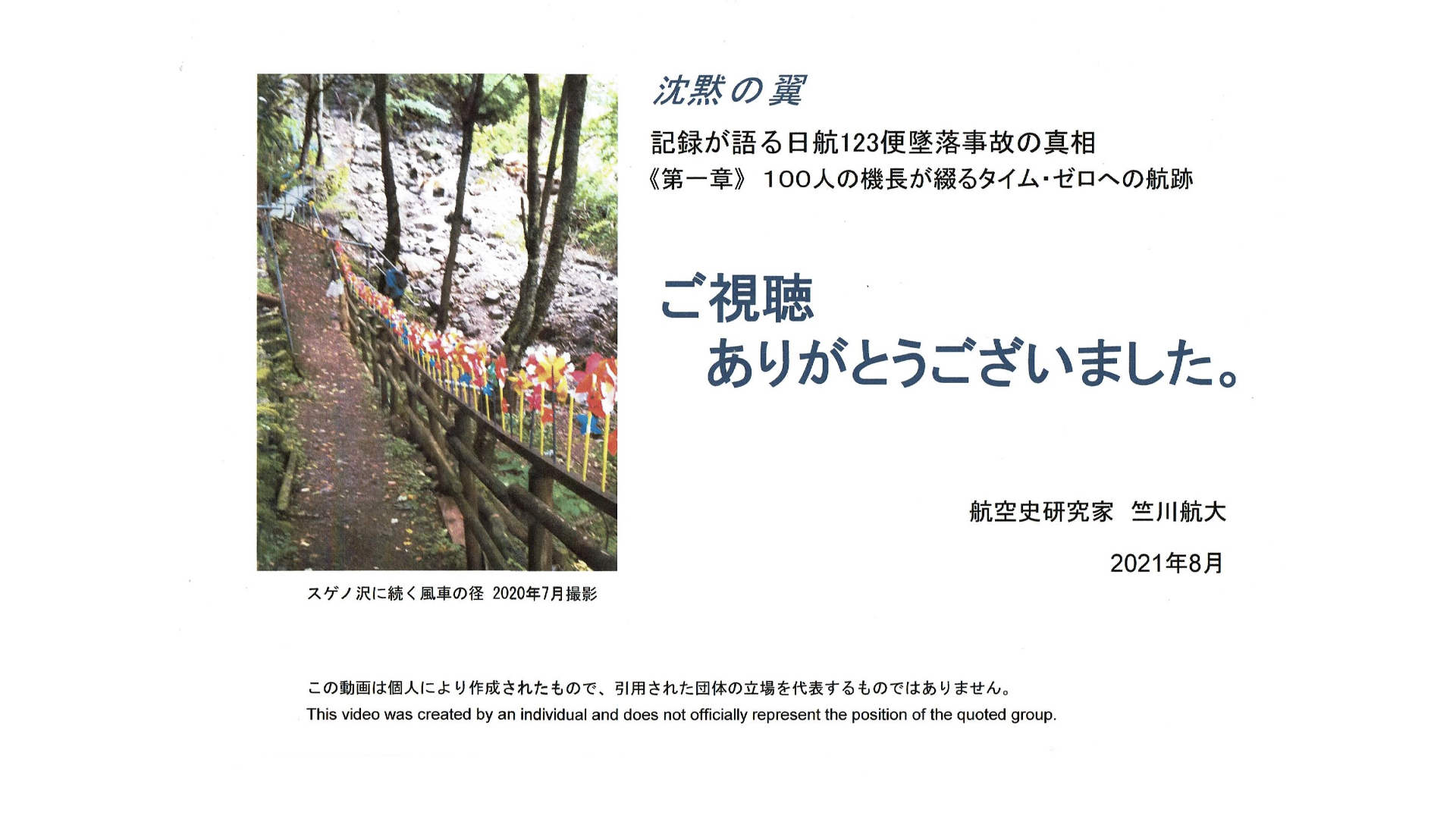Wings of Silence
Records tell the truth about the Japan Airlines Flight 123 crash
Chapter 1: Wake to Time Zero traced by 100 captains - 2
If two aircraft with the same structure, strength and durability operate under the same flight conditions, and one aircraft repeats operation three times more frequently, what is the future expectation for this aircraft? In addition, what if the aircraft had an old wound that didn't heal completely?
The answer is obvious to everyone.
I am Takahiro Jikusen, an aviation history researcher.
In Chapter 1, Part 1, I reported that JAL's B747SR jumbo airliner operates about three times as often as LR aircraft for international flights that cabin pressurization on all routes is the same for LR aircraft.
Part 2 presents individual data. And reconfirm.
First, I will compare the flight status of the two aircraft.
The SR aircraft and the LR aircraft have the same structure. However, attention was paid to the fact that SR aircraft were operated three times as many as LR aircraft.
The daily flight frequency is 1.9 for LR aircraft and 5.5 for SR aircraft, which is about three times as high. And cabin pressurization of the SR aircraft was not always set to 6.9 psi, but to the same 8.9 psi for the LR aircraft.
The flight altitude of the SR aircraft was the same as that of the LR aircraft except for short-haul routes. Moreover, the SR aircraft applied the same pressure load to the fuselage as the LR aircraft on all routes.
It is clear to everyone that the fatigue of SR aircraft progresses at a faster pace than that of LR aircraft.
Three factors are related.
In addition to the three factors, residual strain gathered in JA8119, resulting in peeling.
First, the bottom of the vertical stabilizer broke, and air leaked momentarily through the gap. The destruction of the vertical stabilizer involved the APU and destroyed.
Next, the viewpoint shifts to why the accident occurred in JA8119. The fact that the distortion of the tail-strike accident seven years ago was not removed in JA8119 is noteworthy.
In Chapter 1, I likened the distortion that wasn't removed to a time bomb. The countdown proceeded silently, and after seven years, the time reached zero over Sagami Bay.
In this Chapter 1, Part 2, specific data are shown in order.
First, I will verify the flight frequency.
I am collecting JAL flight timetables. I created diagrams to consider the flight frequency of B747s.
The method started by drawing a diagram.
This timetable is for the month of the accident. At the time it operated between five airports. In August, B747SR operated 60 flights and DC-10 operated 54 flights per day.
Among them, this diagram shows the operation of B747SRs.
The red line shows the planned flight route of JA8119 on the day in the diagram.
At that time, JAL had only landed at these five domestic airport for a long time.
From this diagram, find the minimum number of aircraft that make up this, and calculate how many flights each aircraft will operate in a day.
The average August in 1985, B747SR was operated 5.5 times a day.
Considering the distance between domestic airports, operating hours, and parking hours on the ground, it seems that the maximum number of flight per day is six.
JA8119 was trying to fly from morning till night six times a day without a break.
By the way, what was the situation with the B747LR on international flight?
Intuitively, the flight time is long, so the number of flights per aircraft per day will be small.
This is the international flight B747LR diagram.
There are many flights that do not go into service every day, and it is not easy to calculate because it crosses the International Date Line, but if you express it in one week, it will be such a diagram.
First of all, the average number of flights per aircraft per day is 1.9. This is equivalent to 1/2.9 of domestic flights.
This is the basis for my analysis that domestic flights operate about three times as often as international flights.
It ban be seen that although SR and LR aircraft have the same structure and the same strength and durability, there are large difference in operating condition.
I continued to analyze domestic flights, focusing on the number of flights per aircraft per day.
Comparing the numbers that can be read from the diagrams of each aircraft, I obtained interesting results. Please pay attention to the numbers in the yellow frames.
Compared to the number of flights per aircraft when JAL operated domestic flights such as the B727, DC-10, DC-8 and B767 as major aircraft, the B747SR at the time of the accident had almost the same level of operating conditions.
By the way, the situation was a little tighter than ANA's B747SR at that time.
The B747SR was completely integrated into domestic flights, and there was a dense flight condition in Japan that could not be seen overseas.
Next, let's consider the flight altitude of the B747.
I keep a flight record every time I board an airplane. I ask the captain for technical data every time, and I got the data directly from more than 100 JAL B747 captains.
I will introduce my flight record. I will hand over the page on the right to the flight attendants and ask the captain to fill out.
This is part of my flight record.
This case is a flight record of JAL62 flight from Narita to Los Angels.
The page on the right is what I asked the captain to fill out. I was asking about the weight and speed of the aircraft and others. The page on the left is the information I filled in, recording data that I could find, such as time, seat number, weather, and gate number etc.
In this case, the captain recorded an altitude of 37,000 feet and I recorded a flight time of 9 hours and 42 minutes. This graph is created from two types of data in this way.
There are about 150 dots of JAL B747 flight data.
Black circles show domestic flight data and white circle show international flight data.
What we can read from the flight record is the relationship between flight time and flight altitude.
On short-haul routes such as Haneda to Osaka, the flight time does not exceed one hour and flight altitude does not exceed 30,000 feet.
On the other hand, we obtained interesting data, such as flights that fly over an hour on domestic long-haul routes fly at the same altitude as international flights.
It is clear from this figure that the SR aircraft had a tighter flight status than the LR aircraft on international flights, considering the expansion and contraction frequency of the aircraft at high altitude and the flight frequency.
These objective data I have collected are the first to be released this time, but they have cleared important facts that the Aircraft Accident Investigation Report does not tell.
Boeing set such conditions for the different flight conditions of SR and LR aircraft.
Boeing has more than doubled the number of landings of LR aircraft for SR aircraft that land frequently, but has reduced the flight time to 68%.
The important thing is to set the cabin pressurization of the SR aircraft lower than that of the LR aircraft. From 8.9 psi to 6.9 psi.
Considering the flight patterns of the two aircraft, this is a natural procedure, and Boeing's intention is understandable.
However, for some reason JAL did not set the pressurization of the SR aircraft as it was, and always set it to the high pressurization of the LR aircraft for international flights.
On the other hand, for short-distance routes that fly low, the pressurization altitude was lowered to maintain the comfort of the cabin environment during flight, which is close to the surface of the earth.
In the process of searching for the cause of the accident, the factor of changing the cabin pressurization setting of the SR aircraft is most important item.
This figure is an image diagram.
This figure shows an image of flight time and flight altitude from Haneda to each airport.
Long-haul routes have time to climb to the optimum altitude of 35,000 feet, which saves fuel overall even if the aircraft consumes fuel to reach that altitude.
The red line is the Haneda-Osaka line, but since the aircraft must rise and descend immediately, the cruising altitude must be lowered.
All JAL domestic flights were over the sky, and the fuselage was swollen to the samw extent as the LR aircraft.
This is a measure that can be taken because it is a route that flies at a low altitude from the beginning, but in the end , the SR aircraft was flying a swelling state on all routes.
JAL set the same high pressurization as the LR aircraft on the SR aircraft, but it was a setting that was never gentle on the SR aircraft.
Was it the only reason to focus on passenger-first comfort?
In the operation of the B747, a new concept of maintenance method based on reliability management was introduced. This introduction process is related to SR aircraft, so I will explain it.
In order to obtain maintenance guidelines, the major airlines that first introduced the B747 collaborated internationally with a new method of grasping the overall tendency of parts to fail by inspecting the condition of some parts. The effect was confirmed.
Ten aircraft from each company were followed in the order of introduction. In the case of JAL, the red circles in the figure are the 10 aircraft, but the SR aircraft in the blue circles were introduced several years later, so they were excluded from the initial 10 aircraft.
When I think about it later, I think that SR aircraft that operate three times as often should have been the focus of follow-up.
I think it should have been carefully followed, noting that the super-large B747SR was rushing into an unknown territory that no one had ever experienced.
I will explain the unknown area where the B747SR has advanced.
In this figure, the horizontal axis represents the year and month, and the vertical axis represents the number of flights.
Only two years after the red solid line JA8119 went into service, it caught up with the number of flights of the first B747, JA8101, which was in service six years ago. JA8119 stepped into an unknown area that was not experienced by the number of takeoffs and landings.
The percentage shown in the figure is the remaining rate for the maximum number of landings allowed for the LR aircraft.
There is a significant difference in the operational status of the two aircraft as shown in this figure.
This was expected. Therefore, Boeing predicted this situation in advance and put restrictions on the number of landings and flight time.
Even if this limit is not reached for the time being, if the limit of LR aircraft with the same strength and durability is applied to SR aircraft, it will reach the limit of the number of landings in a few years.
At the time of the accident, the JA8119 had repeated takeoffs and landings as many times as it had been in service for 35 years in terms of LR aircraft.
It is estimated that JA8119 has been subjected to repeated stress of nearly 1 million times since its manufacture on the bottom of the vertical stabilizer.
Even considering the safety margins of all machinery, it must be said that durability is approaching its limit.
It is certain that the metal fatigue remaining in the pressure bulkhead was involved.
I will summarize Chapter 1 Part 2.
The diagram drawn from the timetable at that time shows the number of times the SR aircraft is operated per day.
The cabin pressurization of the SR aircraft was always set to 8.9psi, the same as the LR aircraft.
Boeing set 6.9 psi because it assumed that the SR aircraft would fly low, so it seems that JAL made a mistake about their setting 8.9 psi.
It seems that the three factors came out because the SR aircraft went into service on the Haneda-Okinawa route.
I think that the oil crisis that occurred the month after the introduction of the SR aircraft had to fly high in order to improve fuel efficiency.
However, at 6.9 psi for SR aircraft, it is absolutely impossible to climb to a high altitude, so I think JAL has decided to change to 8.9 psi and that has become normal.
According to the newspaper, Boeing told JAL's technical team that they visited Boeing,"We should have agree to lower the cabin pressurization of SR aircraft than that of international flight."
It is quite possible that change led to three factors and caused an accident.
At the time of the accident 13 years later, the pressurization of the SR aircraft remained high.
The JAL domestic flight timetable for August 1972 announces that the B747 will be in service between Tokyo and Okinawa from the 1st. It is a flight immediately after Okinawa was returned from the USA in May.
Since the number of seats on the B747 is 384 in the timetable at this time, LR aircraft are used.
The first SR aircraft was registered in September 1993, so it is not in time for the first flight of the Okinawa route.
There is no problem because the cabin pressurization of the LR aircraft is 8.9 psi. The problem is that when SR aircraft are introduced, if 6.9 psi for SR aircraft is adopted, it will not be possible to fly at high altitude with good fuel economy.
In this state, not only will it not be possible to fly as scheduled, but what the previously in service B727 could do will not be possible with the new B747.
My guess is that JAL decided to follow the condition sufficiently and operated at 8.9 psi. I think they made the decision. This is because the routes that can be flown at present are limited to Haneda-Osaka.
I think JAL should have set a limit on the number of landings similar to that of LR aircraft. In other words, it is the LR aircraft itself.
It is unclear how JAL dealt with it, but it is certain that the situation has not changed at least as of August 1985.
It may be a fact that the parties want to hide without mentioning the accident investigation report.
It supplements the scattering of insulation and the destruction of the vertical stabilizer.
Part 3 organizes the process of destruction.
At the same time, I will technically consider various theories such as collision of the target aircraft of the Self-Defense Forces, which is reported to the public.
And I will explain the mechanism that the air leaked at the time of zero and stopped after that.
This was the biggest bottleneck for me.
Without a rational explanation of this mechanism, I had a strong feeling that I would not be able to openly point out the contradictions in the accident investigation report.
I would like to introduce the fact that the glass ball of the carbonated drink Ramune bottle was a hint for me to sort out the difficult problem.
Thank you for watching.
This was reported by Takahiro Jukusen, an aviation history researcher
See you next time in Part 3.

